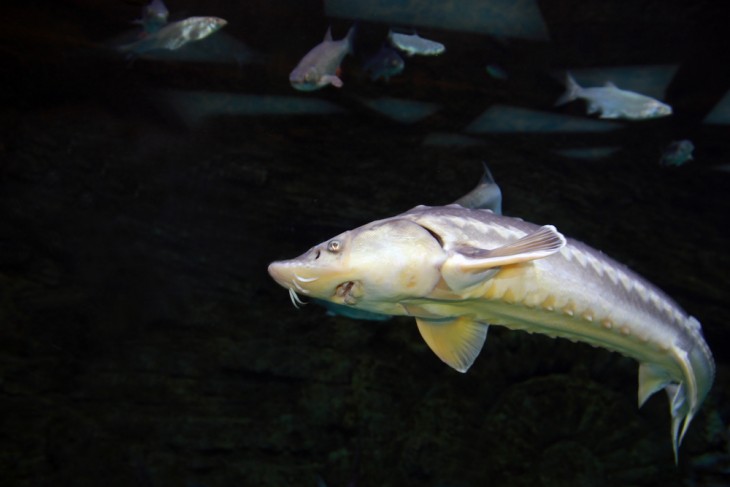A recent study revealed the startling fact that the influenza virus may have originally started in fish. Specialists searching genetic databases have discovered a distant relative of the viruses responsible for seasonal influenza in sturgeon. By the way, the flu is raging in Hungary, last week more than 65,000 people were diagnosed with a flu-like illness.
The paper’s authors also found that the broader family of viruses, which includes influenza, likely arose hundreds of millions of years ago from ancient aquatic animals that evolved long before the first fish.
“Viruses in this group seem to be particularly adept at jumping back and forth between hosts,” says Mary Petrone, a virologist at the University of Sydney in Australia and a co-author of the study. natureto.
Knowing about the leaps of ancient host cells can help scientists identify viruses that could cause new human pandemics.

The origin story of influenza
Like many virologists, Petrone spent the first few years of the outbreak intensely studying SARS-CoV-2. But when he moved to Australia to do postdoctoral research, he wanted to get away from people but spend a lot of time in one of the country’s most famous ecosystems.
“After working on Covid for two years, I thought I’d go to the reef to do field work” He says.
Corals are part of a phylum called Cnidaria, whose ancestors diverged from other animals about 600 million years ago. Petrone hoped that studying coral reefs would reveal the deeper history of viruses that infect animals — especially those with RNA genomes. This group of viruses includes many human and animal pathogens.
However, Petrone’s first trip wasn’t to a dive shop, but to Zoe Richards, a coral reef researcher at Curtin University in Bentley, Australia, who gave her samples of two types of coral from the coast of Western Australia. When he analyzed RNA collected from the corals, he found evidence of infection with viruses belonging to a group called Articulavirales, which includes the influenza virus family, and the group called Quaranjaviruses. Viruses of the latter group circulate in ticks, which are sometimes transmitted to humans, birds and other vertebrates.
The new research indicates that viruses infecting coral reefs are part of an ancient family of viruses that may have emerged around 600 million years ago and later supplanted other members of Articolaviralis.And Including influenza and Quaranj viruses.
Fish secrets
As a result of this discovery, Petrone wondered if influenza viruses could also be born in the sea? There is already some evidence of this. In 2018, for example, researchers identified a distant relative of influenza in slime fish. These cute, sticky creatures are descended from an early lineage of vertebrates, and as the researchers point out, influenza evolved alongside vertebrates.
When searching genetic databases, Petrone found RNA sequences associated with influenza in samples of Siberian sturgeon. Sturgeon is a jawed vertebrate that is more closely related to humans than to hunting. But the sturgeon virus branched off the main influenza family tree before any other known influenza virus, including the silves virus.
“The discovery of two early strains of influenza indicates that influenza may have infected aquatic animals, including fish, before reaching land.” Batroun says.
But it is not clear whether the flu made landfall with early terrestrial vertebrates or if it came from the sea to land more recently. To find out, researchers need to find relatives of influenza in more animals and better understand how the virus spreads between host species.
Sailor
Ji Kui, an evolutionary virologist at China’s Pasteur Institute, agrees that influenza and its extended family may have originated from the sea. In 2021, his team analyzed the genomes of deep-sea lobsters and identified viruses belonging to the broader influenza group that, he says, are important,
There is an untapped viral diversity in the aquatic environment.
Robert Gifford, an evolutionary virologist at the University of Glasgow, said it would be surprising to find such a large group of viruses that originated in a non-aquatic environment due to the ancient nature of marine life, and he said this new study provides convincing evidence of that. Influenza viruses are of aqueous origin.
The researchers said that identifying the leaps of ancient host cells could also help researchers assess the risks some viruses pose to humans. Petrone’s team also found evidence that Quaranjviruses, which infect ticks, may have jumped to animals after first trading in crustaceans.
“Exploring such leaps and bounds shows that studying aquatic viruses can help us better understand the emergence and historical evolution of viruses with zoonotic potential (from animal to human),” adds Chantal Vogels, a virologist at the Yale School of Public Health in Connecticut. .).
Gifford agrees that studies like Petron’s can help identify viruses that can cause outbreaks in humans and other animals. However, he cautions, conclusions about ancient host cell jumps may change as more viral family trees emerge, and these may rearrange the facts.






